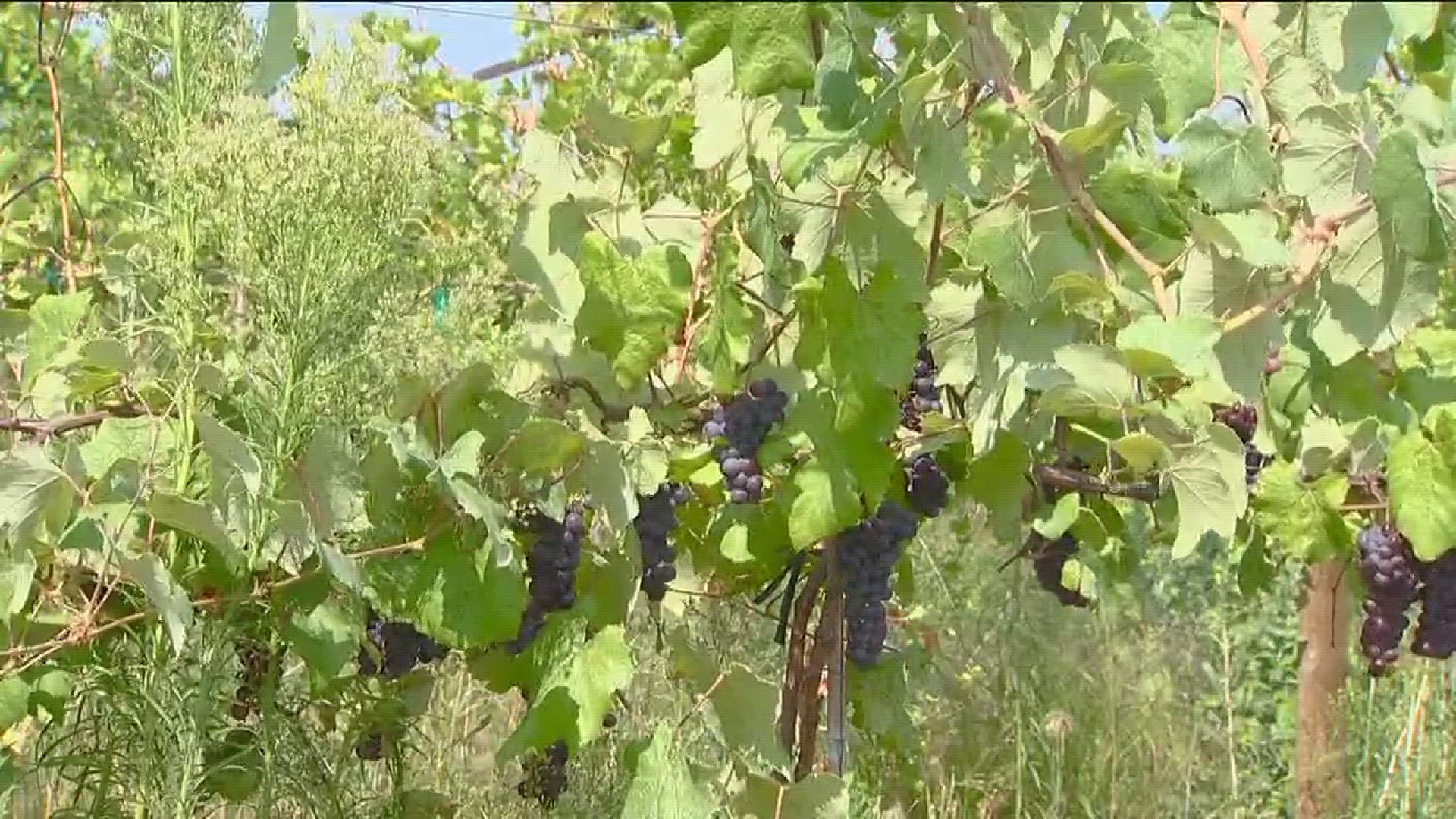It’s harvest season, and this is the time of year when we find all kinds of delicious Idaho-grown fruit, from apples to peaches, nectarines, plums and grapes. But because of last winter’s severe weather, local fruit production is down, and you might even be finding that prices on fresh fruit have gone up.
Today on “You Can Grow It,” garden master Jim Duthie made a visit to the University of Idaho agricultural research station near Parma to find out just what the impact of last winter’s weather was on the Idaho fruit industry, and how it might have affected the fruit you’re growing in your home garden, as well.
Last winter’s record snow and extreme cold is a distant memory for most of us, but southern Idaho fruit growers are still dealing with the damage it caused. Many growers are seeing up to 50 percent less fruit this season, and some have lost almost their entire crop. That record cold killed branches and even entire trees, and at many local vineyards, grapevines froze and died back all the way to the ground. You may have had some damage to your backyard fruit trees or grape vines, as well.
But it’s not all bad news. At the U of I research farm near Parma, some varieties of grapes and other fruits being studied here came through the harsh winter weather just fine, and may prove to be more productive options to commercial growers and home gardeners alike.
“This block we have 60 different varieties of peaches and nectarines, and we have been selecting the best variety for growers of Idaho to be competitive in the world market,” said Dr. Esmaeil Fallahi, Director, UI Pomology Program.
But last winter’s severe weather hit hard here, too, forcing the cancellation of their annual Fruit Field Day.
Temperatures here dipped to minus 21 degrees on a few nights last January.
“And that kind of temperature was cold enough to damage some crops, including peaches. And then we have varieties that, they were growing okay, they looked okay, but in the middle of July, branches started to die, and they were showing symptoms of the cold damage,” said Dr. Fallahi.
So what can you do if you experienced damage to your fruit trees?
“I think that if you have a tree that has five limbs, if one of them is damaged, you can simply get a chain saw and get rid of that.”
“But if more than half of the tree is dead, or say, two limbs out of four dead, it’s probably time to replace that whole tree.”
Much of Dr. Fallahi’s research includes finding the best varieties of fruit in terms of size, color and taste, but last winter’s weather also provided an opportunity to see which varieties could tolerate the extreme cold temperatures.
“Absolutely, yes. That helps us to kind of screen down varieties, and then the ones that cannot survive in this kind of weather, we simply will not recommend to our growers.”
It takes about 10 to 12 years to study a particular line of fruit trees before recommending it to growers. Some selections produced well for eight years, but an unusual early deep freeze a couple of years ago killed many of the trees. Growers were advised that that variety will produce good fruit, but isn’t tolerant of extreme cold.
“That’s why it takes a long time to do fruit research and present it in a meaningful way,” said Dr. Fallahi.
And their research isn’t limited to the effects of cold weather.
“Some trees may not be that tolerant to the heat. When they get extremely hot, they may not be very productive after a few years. So that’s part of our selection goals.”
At many southern Idaho vineyards, growers noticed the cold damage to their grape vines almost immediately. Fortunately, deep snow cover insulated the roots from the extreme cold and most survived. But the vines had to be cut back to the ground, and are just growing back.
“I think it’s going to be a setback for a few years, and then they are coming back.”
One grape variety, called Tomcord, a cross between Thompson and Concord grapes, proved to be very cold hardy, with a 100 percent survival from the cold without any damage.
“We are testing different varieties of grapes here, and the survival here quite depends on which variety they are.”
“But as a result of this cold damage, it would be very natural if we find fruit that is a little more expensive in the market.”
“It takes a couple of years, maybe three years of setbacks, but we will survive.”
And that’s good news. As long as we don’t have a repeat of the extreme winter weather, the Idaho fruit industry will bounce back and be fine. And so will your fruit trees and vines in your home gardens.
Last winter’s extreme cold temperatures obviously did a lot of damage to fruit trees, but most trees were dormant by the time the coldest weather set in. The early deep freeze in November of 2014 actually killed more fruit and ornamental trees throughout the Treasure Valley because it hit early, before the trees had a chance to harden off and prepare for the winter cold.
If you’re looking at planting or replacing fruit trees or grape vines in your garden, we have some recommendations from the Parma Research Center.
Dr. Fallahi’s recommendations for grapes, peaches and nectarines for home gardeners in the Treasure Valley:
Grapes: Tomcord & Jupiter
Peaches: July Flame, Snow Giant (white flesh), O Henry (yellow flesh)
Nectarines: Flame, Arctic Jay]

